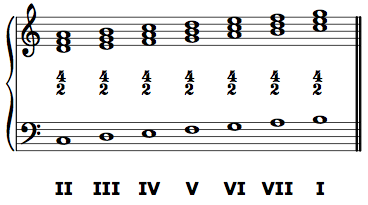Chords of the fifth
In any chord of the fifth (“root position”: 5/3 or 7/5/3 chord), the bass note and the root of the chord are the same. The Roman numeral to be assigned to any chord of the fifth, then, is the scale degree of its bass note. If do is in the bass, the bass is scale-degree 1, and the Roman numeral is I. If re is in the bass, the Roman numeral is II. And so on.
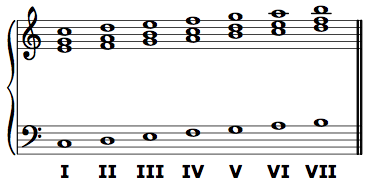
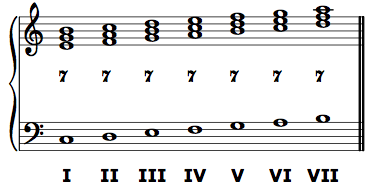
“First-inversion” chords of the sixth
Chords of the sixth that take the figures 6/3 or 6/5/3 are first-inversion chords. They are so named because the third of the chord (the next chord member above the root) is in the lowest voice. However, thinking about inversions while performing an analysis can be cumbersome. It is often simpler to remember that if the figure is 6/3 or 6/5/3 (or an abbreviation such as 6 or 6/5), the root of the chord is the sixth above the bass. If mi is in the bass, and the figure is “6”, the root is do, and the Roman numeral is I. If fa is in the bass and the figure is “6/5”, the root is re, and the Roman numeral is II. And so on.
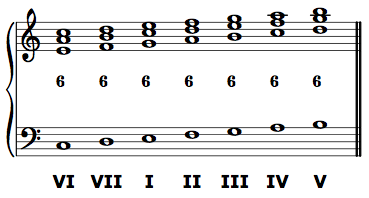
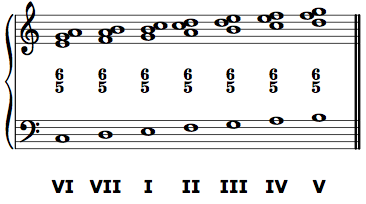
“Second-inversion” chords of the sixth
Chords of the sixth that take the figures 6/4 or 6/4/3 (or an abbreviation such as 4/3) are second-inversion chords. They are so named because the fifth of the chord (the second member of the chord above the root) is in the lowest voice. Again, it is often simpler to remember that for 6/4, 6/4/3, and 4/3 chords, the root is the fourth above the bass. If re is in the bass, and the figure is 4/3, the root is sol, and the Roman numeral is V.
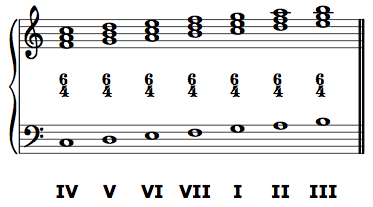
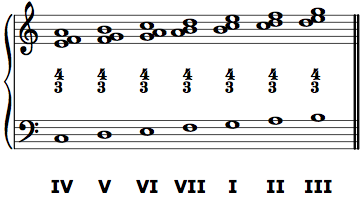
“Third-inversion” chords of the sixth
Chords of the sixth that take the figure 6/4/2 (or its abbreviation 4/2 or simply 2) are third-inversion chords. Their root is a second, or a step, above the bass. The most common 4/2 chord has fa in the bass, and sol is its root, making its Roman numeral V.
